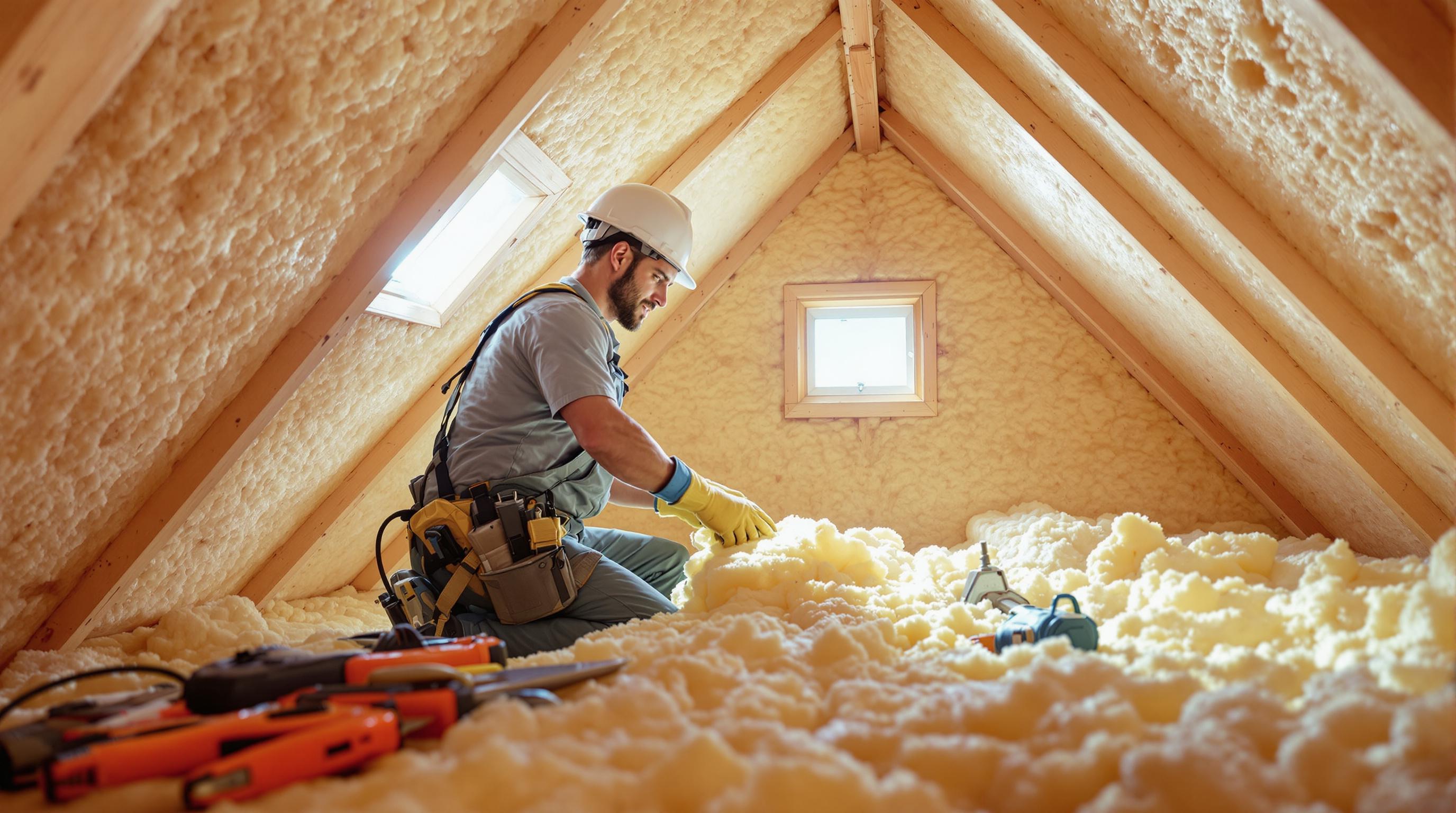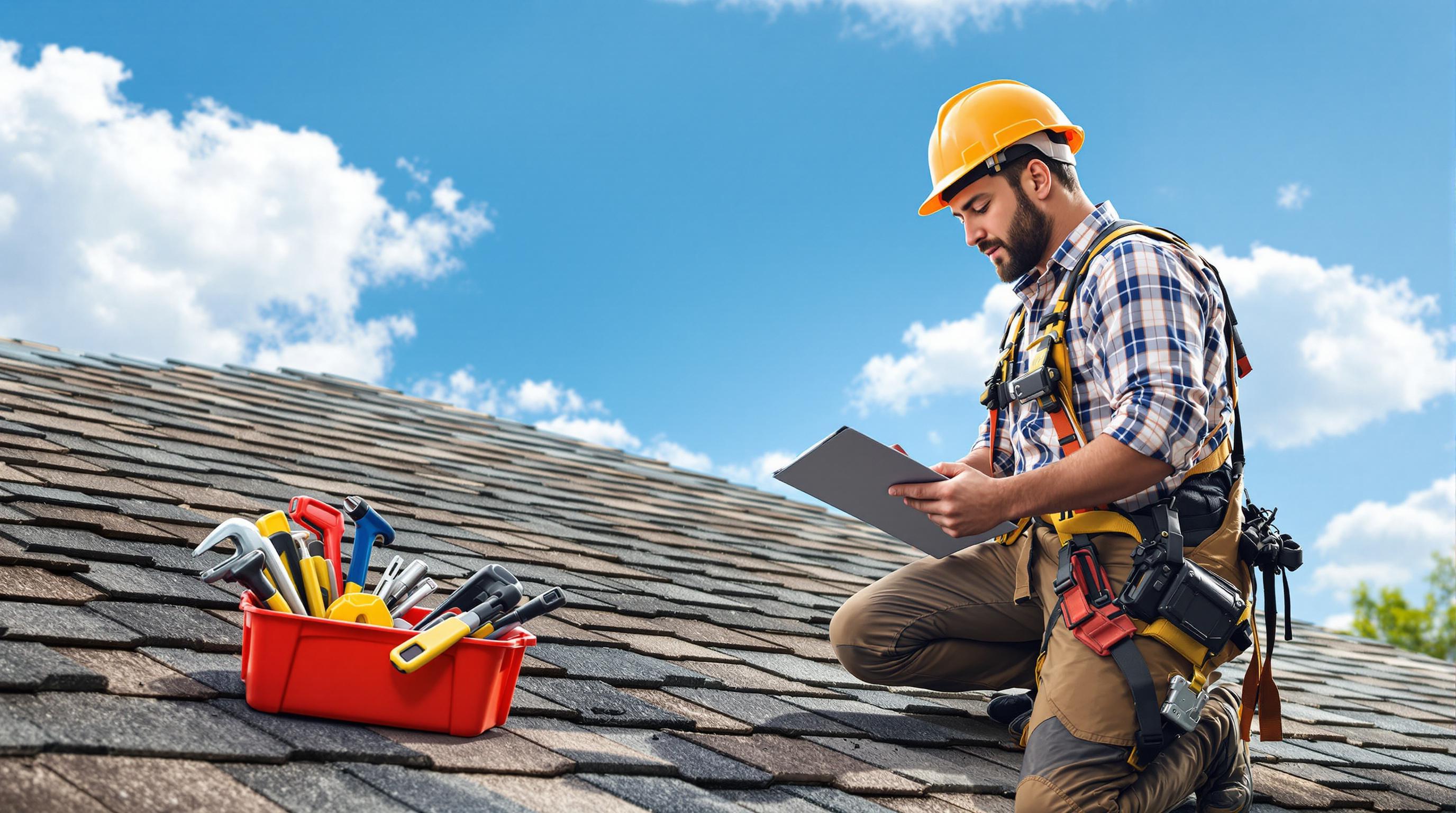Can you tell storm damage from normal roof wear? Knowing the difference can save you money and ensure proper insurance coverage.
- Storm Damage: Sudden and caused by weather events like hail, wind, or hurricanes. Look for missing shingles, dents, cracks, or sagging areas.
- Normal Wear and Tear: Gradual and due to aging. Signs include curling shingles, faded materials, or algae growth.
Quick Comparison:
| Feature | Storm Damage | Normal Wear and Tear |
|---|---|---|
| Timing | Sudden | Gradual |
| Appearance | Dents, cracks, missing parts | Fading, curling, algae growth |
| Pattern | Concentrated | Even distribution |
| Cause | Weather events | Long-term exposure |
Tip: Regular inspections and documentation are key to spotting storm damage early and avoiding costly repairs. If in doubt, consult a roofing professional.
Basics of Roof Damage: Storms vs. Wear and Tear
What Counts as Storm Damage?
Storm damage happens when severe weather causes sudden harm to your roof. In Houston, where hurricanes and hailstorms are common, this might look like missing shingles, dented flashing, or granule loss [1][2].
Even a newer roof isn't immune. Strong storms can cause serious issues, no matter the roof's age or condition. Quick professional assessment is key to avoiding further problems after such events [1][3].
What Is Normal Wear and Tear on a Roof?
Wear and tear occurs gradually over time. Signs include curling or buckling shingles, worn flashing, and algae or moss growth [1][2]. Unlike storm damage, these changes happen slowly, often over months or years.
| Characteristic | Storm Damage | Normal Wear and Tear |
|---|---|---|
| Timing | Sudden | Gradual |
| Pattern | Concentrated damage | Even distribution |
| Appearance | Sharp dents, tears, missing materials | Fading, curling, slow deterioration |
| Cause | Weather events | Long-term exposure |
Why Knowing the Difference Matters
Figuring out if your roof has storm damage or just wear and tear can make a big difference in how you handle repairs and costs. This is especially important for insurance, as most policies cover storm-related damage but not regular wear and tear [3].
For Houston homeowners, where severe weather is common, knowing the type of damage helps with:
- Deciding when to bring in a professional
- Filing accurate insurance claims
- Planning for future maintenance [1][2]
If you're unsure, a professional inspection can provide clarity. Experts in the Houston Roofing Directory can assess your roof and guide you on the best next steps based on their findings.
Now, let's dive into how to spot storm damage on your roof.
How to Spot Storm Damage on a Roof
Sudden Changes to Look For
After a storm, it's important to check your roof for any noticeable damage. Start by looking for issues like missing or displaced shingles, especially near edges and valleys - these are often the first areas hit by strong winds [1].
From ground level, you can quickly spot major problems such as:
- Shingles scattered on the ground
- Dark patches where roofing material is missing
- Bent or damaged metal flashing
- Sections of the roof that appear to sag
Common Signs of Storm Damage
Storm damage often creates distinct patterns that stand out from normal wear. Here’s a breakdown of what to watch for:
| Damage Type | What to Look For |
|---|---|
| Hail Damage | Round dents or bruising |
| Wind Damage | Lifted or torn materials |
| Impact Damage | Punctures or cracks |
| Water Damage | Dark spots or streaks |
Pay attention to granules on the ground after a storm - this can indicate recent damage rather than gradual aging [2]. Also, inspect metal surfaces like vents and flashing for dents or warping [1].
Examples of Storm Damage in Houston
In Houston, hurricanes often bring strong winds that can lift shingle edges, leaving the roof vulnerable to moisture damage [2].
"High winds can lift the edges of asphalt shingles and potentially expose the underlying components to moisture, causing further damage" [2].
Hailstorms in the area tend to leave circular dents on metal surfaces and bruised spots on asphalt shingles. Severe storms can even crack or break clay tiles.
For homeowners in Houston, it’s important to document any damage right after a storm. Take clear photos of the affected areas and reach out to a professional roofer via the Houston Roofing Directory for a detailed inspection. This documentation can help with insurance claims and ensure proper repairs [3].
Not all roof issues are caused by storms, though. Being able to tell the difference between storm damage and normal wear can save you unnecessary repairs.
How to Recognize Normal Wear and Tear
Aging and Long-Term Damage
Over time, exposure to weather naturally affects roofing materials. For example, UV rays from sunlight can make asphalt shingles brittle, while daily temperature changes cause materials to expand and contract, gradually weakening them [1].
This aging process usually impacts the entire roof evenly, rather than creating isolated damage. You’ll notice granules wearing away and materials breaking down across the surface over time [2].
Signs of Regular Wear and Tear
Normal aging looks different from storm-related damage. Here’s how it typically shows up on various roofing components:
| Component | Common Signs of Wear |
|---|---|
| Shingles | Fading, slight curling at edges |
| Flashing | Light corrosion, worn-out caulking |
| Gutters | Rust spots, loose seams |
| Roof Surface | Algae streaks, moss in shaded areas |
Pay extra attention to spots where tree branches touch the roof. These areas often wear down faster due to repeated scratching, which removes protective granules [2].
When to Fix Wear and Tear
Tackle small issues like loose shingles or worn flashing as soon as possible to avoid water damage. However, if you notice widespread aging and your roof is approaching the end of its lifespan, it might be time to consider a full replacement [3].
In Houston, homeowners can use the Houston Roofing Directory to connect with local professionals who understand the area’s specific climate challenges. A professional inspection can help you decide whether repairs or a replacement is the better option for your roof’s condition.
If you’re unsure whether the damage is due to wear and tear or a storm, a roofing expert can assess the situation and guide you on the right course of action.
sbb-itb-df3c0e6
Hail Damage Vs. Natural Wear and Tear
Why You Should Get a Professional Roof Inspection
Getting your roof inspected by a professional can save you from expensive mistakes and help you secure proper insurance coverage when needed.
What Experts Can Do for You
Roofing professionals carefully examine shingles, flashing, gutters, and supporting structures, spotting damage that most people might miss. Their evaluations offer several benefits:
| Inspection Benefit | How It Helps |
|---|---|
| Documentation | Strengthens insurance claims |
| Assessment | Differentiates storm damage from normal wear |
| Prevention | Detects problems early |
| Cost Analysis | Assists in planning repairs |
This detailed approach helps avoid complications down the road [1].
How to Find a Reliable Roofer
When choosing a roofing contractor, look for these key qualifications:
- Proper licensing: Ensure they comply with local regulations.
- Insurance: Verify they have liability and worker's compensation coverage.
- Local expertise: Familiarity with Houston's specific weather challenges.
- References: Check reviews or feedback from recent local projects [2].
"When in doubt, it is always best to consult with a professional roofer who can accurately assess the condition of your roof." - Tier-One Roofing Blog [1]
Use the Houston Roofing Directory to Find Help

The Houston Roofing Directory connects homeowners with trusted roofing contractors for both residential and commercial needs. This platform allows you to:
- Compare contractor qualifications.
- Read contractor reviews and ratings.
- Locate specialists in your area [3].
With the right expert advice and tools, you can tackle roof issues confidently and protect your home investment.
Conclusion: Key Points to Remember
Professional inspections can help you clearly understand the condition of your roof, especially when it comes to telling the difference between storm damage and regular wear. Here's a quick comparison to make it easier:
| Damage Type | Characteristics | Timeline | Common Signs |
|---|---|---|---|
| Storm Damage | Sudden and intense | Happens right after storms | Missing shingles, dents, granule loss |
| Normal Wear | Gradual deterioration | Occurs over several years | Curling, fading, algae growth |
For homeowners in Houston, where extreme weather is a regular concern, spotting the difference between these types of damage is crucial to protecting your home and its value [1][2]. The Houston Roofing Directory connects you with contractors who are familiar with the local climate and can evaluate your roof effectively.
To keep your roof in good shape, consider these steps:
- Schedule routine inspections
- Take photos of storm damage for records
- Fix wear-related issues without delay [1][2]
Knowing what kind of damage your roof has ensures proper repairs, smooth insurance claims, and lasting protection for your home [1][4].


